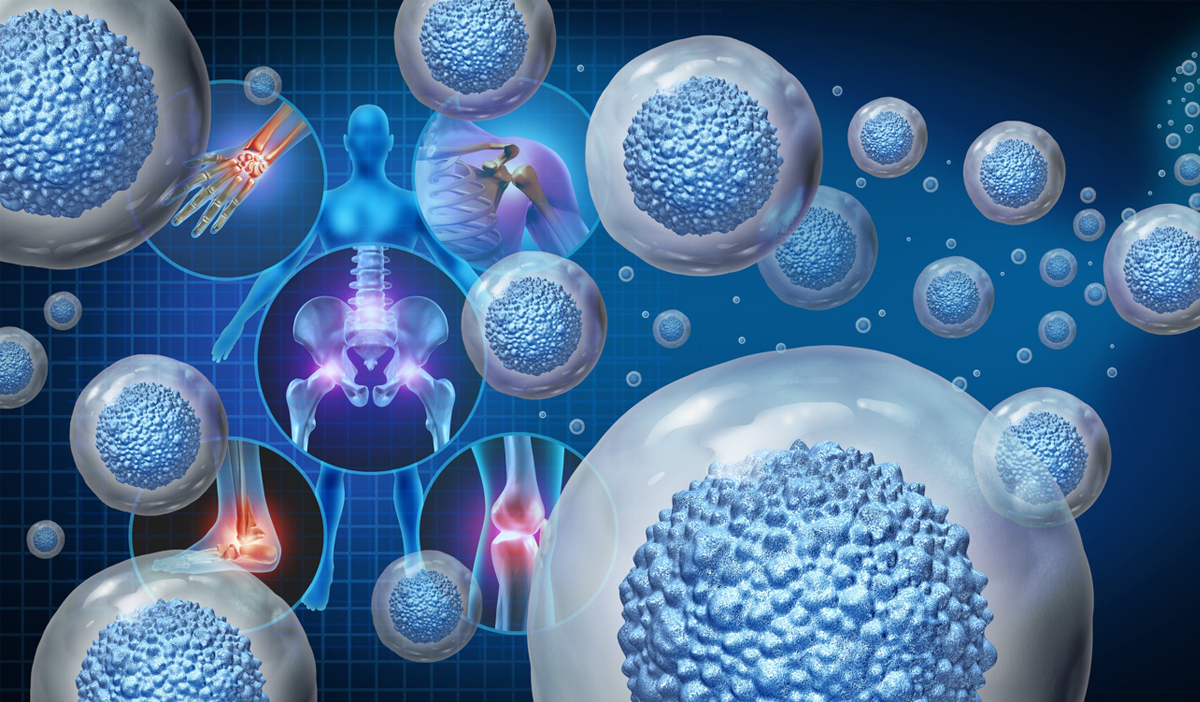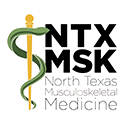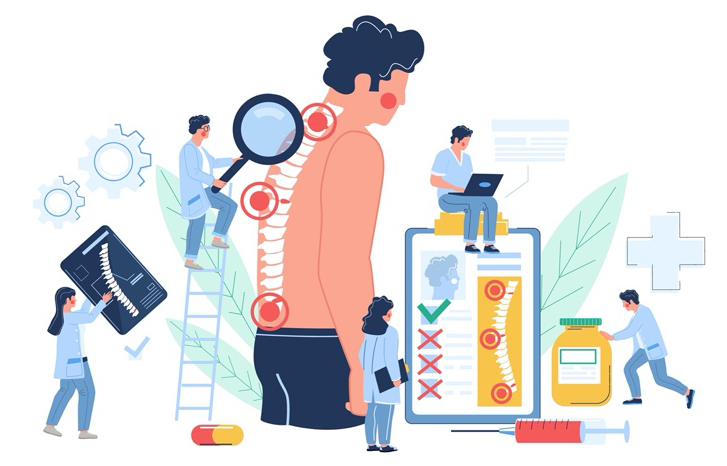
Do you ever wonder what that crunchy sound in your back is? If you hear “crunching” in your joints, you are most likely experiencing crepitus. This crunching, grating, or popping sound can be cause by multiple factors, such as release of small pockets of air. These sounds are sometimes normal. When cartilage in the spine is healthy, vertebrae glide smoothly during movement. However, as cartilage in the joints begins to deteriorate, the grating of bone on bone contact causes friction, resulting in painful inflammation and limited range of motion.
 The spine is a wondrous network of bones, discs, facet joints, ligaments, spinal nerves and muscles, all combined and connected in an incredibly complex way to provide both stability and wide range of movement. The spine is actually a series of joints, joints that sometimes need help functioning as they are intended.
The spine is a wondrous network of bones, discs, facet joints, ligaments, spinal nerves and muscles, all combined and connected in an incredibly complex way to provide both stability and wide range of movement. The spine is actually a series of joints, joints that sometimes need help functioning as they are intended.
Healthy function of joints is controlled by “chondrocytes,” mesenchymal stem cells that regulate replacement of damaged cells. Mesenchymal stem cells are able to differentiate into multiple forms of musculoskeletal tissue, such as bone, cartilage, tendons and ligaments. When the balance between the supply of new cells is adequate to maintain healthy function, the body is in homeostasis. However, imbalance in this function leads to degeneration of tissue, such as osteoarthritis.
Osteophytes: common cause of the “crunchies”
Cartilage tissue is actually a dense network of collagen fibers, proteins, and elastin fibers called the “cartilaginous matrix.” Without its own blood supply, cartilage tissue must draw nutrients and oxygen from adjacent vascularized bone. Researchers are finding that the health and function of the subchondral bone plays a significant role in the health of cartilage that lies above it. As the demands of aging cartilage increasingly draw nutrients from the blood supply of the periosteum, the nutrient rich covering of the bone, nodules called “osteophytes” often result. An osteophyte is actually fibrocartilage, a capped bony outgrowth originating in the periosteum.
When this happens, you may feel:
- Knobby or bumpy areas
- Pain near the affected joint
- Reduced range of motion (how far the joint moves).
- Stiffness.
The health and function of the subchondral bone affects the health of the cartilage that lies above it.
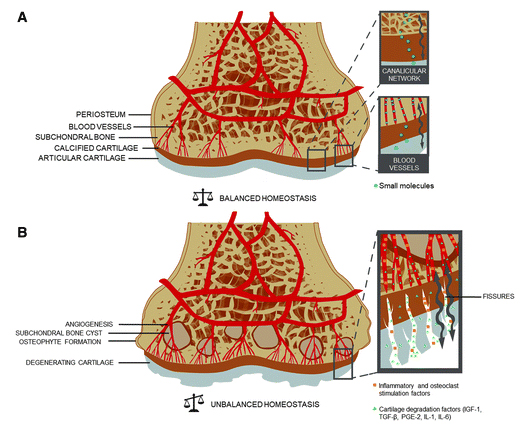
Osteophytes can also be caused by your body’s attempt to heal by creating new bone tissue to stabilize the joint. Remodeling of subchondral bone may result. Read more from studies at Cleveland Clinic.
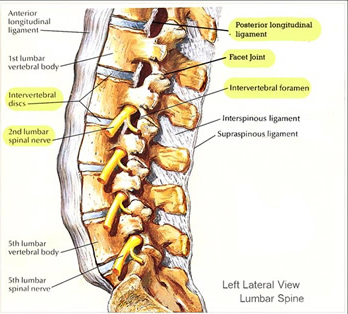 Osteophyte formation is most common on the facets, the hinges on the vertebrae that connect adjacent vertebrae, resulting in stiffening of joints. Osteophytes are common characteristics of osteoarthritis, distinguishing osteoarthritis from other forms of arthritis.
Osteophyte formation is most common on the facets, the hinges on the vertebrae that connect adjacent vertebrae, resulting in stiffening of joints. Osteophytes are common characteristics of osteoarthritis, distinguishing osteoarthritis from other forms of arthritis.
Treatment Options
Many spinal conditions can be successfully treated through osteopathic manipulation. OMT treats structural dysfunction to address root biomechanical causes of injuries and conditions to alleviate pain and restore optimal function of the body. Conditions involving damage to joint tissue generally require regenerative procedures that help your body generate new cells to heal more quickly and thoroughly.
We often forget that our spine is a series of joints, each susceptible to joint damage. With strain, or even just life, ligaments holding the vertebrae together can become lax. Muscles weaken, creating less spinal stability. The spine is no longer able to hold in place the protective discs between vertebrae. Surrounding tissue becomes inflamed, causing further joint damage. The “crunchies” appear. It is time to call in the repairmen.
Your body’s natural repairmen
Your body is full of living cells, including some that act as repairmen to stimulate healing from within, or intrinsic healing. “Orthobiologics” is a part of regenerative medicine that uses natural substances (biologics) taken from your own body to treat musculoskeletal conditions.
Natural forces within us are the true healers of disease. ―Hippocrates
Cutting edge science has discovered ways to maximize the oldest form of healing, your own body. By understanding how the healing process actually occurs, physicians are able to enhance the natural physiologic process of cell replacement. Read more
Orthobiologic procedures, such as PRP and Stem Cell Therapy, help supply concentrated amounts of repair cells to areas where they are needed most.
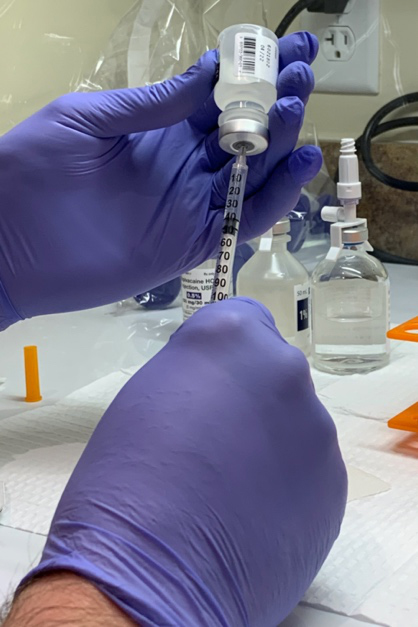 Mesenchymal stem cells (MSCs) have the capacity to self-renew by dividing and developing into specialized cell types (differentiation) to replace aging ones. Learn more about stem cell differentiation from the Amoeba Sisters, a clever series of YouTube videos by a former high school biology teacher and her sister who creates the videos. And, they are from Texas!
Mesenchymal stem cells (MSCs) have the capacity to self-renew by dividing and developing into specialized cell types (differentiation) to replace aging ones. Learn more about stem cell differentiation from the Amoeba Sisters, a clever series of YouTube videos by a former high school biology teacher and her sister who creates the videos. And, they are from Texas!
In addition to differentiation, mesenchymal stem cells coordinate a complex process called "cell signaling" that allows cells to coordinate in real time. MSCs direct the healing response and monitor the regenerative environment by regulating inflammation, remodeling, repair and cellular recruitment. Recently, 80% of the therapeutic effect of stem cells is attributed to their release of protein growth factors that signal cells to facilitate growth/repair.
Stem cells have a unique, intrinsic property that attracts them to inflammation in the body. They assist healing by reducing inflammation and modulating the immune system
If you have been told that steroid injections or surgery are your only options, please learn more about regenerative procedures.
Discover your Options
